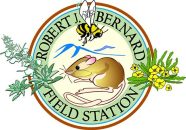Riley, Amanda (2018)
Comparing Soil Respiration in California Sage Scrub and Non-Native Grassland Habitats.
Bachelor of Arts, Scripps College, Environmental Science.
Advisors: Colin Robins & Wallace Meyer.
Soil respiration (Rs) is a major component of the global carbon cycle and therefore important to accurately quantify and parametrize in nutrient cycling models. Controls on Rs in semi-arid environments differ from controls in wetter environments, yet semi-arid Rs dynamics are relatively under-studied. This study establishes baseline Rs rates in a California Sage Scrub (CSS), a non-native grassland (NNG), and an intermediate vegetation community during the summer dry season in southern California. Average Rs rates differed between habitats and were all below 1.0 μmol CO2m-2 s-1. Rs rates were highest in CSS, followed by the intermediate habitat and then the NNG. To identify drivers of Rs, soil temperature, soil moisture, soil organic matter (SOM), total soil C, and total soil N were also measured, though none of these variables had a significant relationship with Rs. However, Rs did respond to manipulations of soil moisture in irrigation experiments, suggesting moisture is the limiting factor on Rs during the dry season. Though ultraviolet (UV) radiation plays a prominent role in the decomposition processes in CSS communities, manipulations of soils UV exposure did not detectably impact Rs. To complete baseline assessments, data collection during and immediately following the CSS wet winter season is needed.
